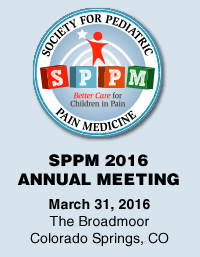Opioid Abuse Problem and Legislation Update
 By Katherine Boretsky, BS, MPH; and Karen Boretsky, MD
By Katherine Boretsky, BS, MPH; and Karen Boretsky, MD
Boston Children’s Hospital
The United States is currently in the midst of an epidemic of prescription opioid abuse. While prescription overdose related deaths had declined from 2011 to 2012 and held steady from 2012 to 2013, deaths from prescription opioid overdose increased significantly in 2013-2014, the most recent year for which the CDC has complete data. Between 2013 and 2014, overdose related deaths attributable to natural and semisynthetic opioids increased 9% (from 3.5 deaths/100,000 to 3.8 deaths/100,000).
Overdose related deaths from synthetic opioids (excluding methadone) also increased from 2013 to 2014. Synthetic opioids are responsible for a smaller number of overdose deaths but the increase was much steeper at 80% (rising from 1 death/100,000 to 1.8 deaths/100,000). The sharp increase in the deaths related to synthetic opioid overdose is largely a consequence of the increasing availability of illegally-manufactured fentanyl.
Part of the problem stems from the paucity of legislation at the federal level addressing prescription opioids since controlled substances are regulated mainly at the state level. The most recent piece of relevant federal legislation was enacted in October 2014, when the FDA reclassified hydrocodone as a Schedule II drug. Previously a Schedule III drug, hydrocodone was found to have a higher potential for harm and abuse and was moved to a more restrictive category.
However, despite a lack of new legislation, the federal government does acknowledge that prescription drug abuse is an ongoing public health threat. In March 2015, the Secretary of Health and Human Services, Sylvia Burwell, announced a targeted initiative to reduce prescription opioid abuse and overdose deaths. Most of the initiative includes providing training, educational resources, and updated prescribing guidelines for physicians to use.
In October of this year, President Obama issued a memorandum to the heads of executive departments and agencies with a similar agenda. The memorandum outlined a two-part strategy to combat prescription drug abuse at the federal level, with the first part requiring federal departments and agencies to train federal health care providers in the appropriate use of prescription opioids. This training is to address best practices for opioid prescribing, the misuse potential of such medications, pain management strategies, the identification of substance abuse disorders, and the proper disposal of controlled substances. Although the training will only directly impact federal health care providers, these providers are meant to serve as a model for physicians nationwide.
At the state level, most prescription drug monitoring is done through prescription drug monitoring programs (PDMPs). A PDMP is a statewide electronic database of records relating to both the prescribing and dispensing of controlled, scheduled substances that authorized individuals can access. Each state can determine whether participation is mandatory, what type of agencies can access the records, what information is included, how quickly information must be entered, and other such relevant details. Currently, every state but Missouri has an operational PDMP, while the District of Columbia has authorized the creation of a PDMP but it is not yet functional.
A few states should be highlighted as having effective PDMP regulations. Florida’s program, the Electronic-Florida Online Reporting of Controlled Substances Evaluation (E-FORCSE), requires dispensers of controlled substances to report all transactions to the database within 7 days. By 2012, oxycodone prescriptions had fallen by 24% and deaths due to oxycodone overdose had decreased by 52%. In the state of New York, prescribers are required to review the state’s PDMP, the Internet System for Tracking Over-Prescribing (known as I-STOP), before prescribing class II, III, or IV substances. The law was put into action in 2012 and by 2013 there was a 75% drop in patients seeking the same drugs from multiple prescribers. Oklahoma is the only state with a PDMP that requires real-time reporting when dispensing controlled substances. Since 2012, a transaction must be reported to the PDMP within five minutes when a schedule II, III, IV, or V substance is dispensed. From 2011 to 2012, drug-related overdoses declined for the first time in a decade, falling by 39%. Oklahoma recently decided to further tighten prescription drug control by enacting a law requiring all prescribers to check the state’s PDMP before prescribing controlled substances. It will be important to analyze the data to see the impact this further regulation has on prescription drug abuse. There is currently no law that mandates the sharing of information across state lines.
There has been some specific legislation regarding opioid prescribing for children. In August of 2015 the U.S. Food and Drug Association approved the use of OxyContin for children ages 11 to 16 with pain "severe enough to require daily, around-the-clock, long-term opioid treatment." In contrast to the FDA approval for adult patients, pediatric Oxycontin prescribing is restricted to patients, who are already responding to and tolerating a minimum opioid dose equal to at least 20 mg of oxycodone per day. The Massachusetts House of representatives is currently debating a bill to only allow a seven-day opioid prescription for children with the only exception being cancer or terminal illness.
This epidemic of non-medical use of prescription opioids parallels recent increases in both the number of opioids prescribed and the amount of opioids dispensed in response to an increased emphasis on treatment of pain. Unfortunately, the unused opioids are being diverted and the non-medical use of prescription opioids is being recognized as the primary gateway to narcotic addiction in adolescents. This may be due to both drug availability and the misconception that prescribed medicines are “safer” than non-prescription drugs obtained on the street. Physicians will be more effective in containing the problem and reversing trends with better awareness of the current problems.

